How To Check Cpu Usage On Windows 10
Sometimes you lot'll be using your PC and suddenly notice it feels sluggish, for no apparent reason. It'due south the type of situation where you lot're clicking on things and doing your normal "Windowsing," but for whatever reason your PC is not as responsive equally it normally is. You're not doing anything intense similar encoding video, so why is your PC chugging along all of a sudden? The truth is, Windows ten PCs have a zillion dissimilar processes running in the background all the time, which accept up both CPU bandwidth and system retentiveness, so when your PC begins to lag, you want to know what is taxing your resources.
Check resource usage in Task Managing director
To brainstorm your investigation, starting time with the Task Managing director—a handy tool built into Windows that shows yous myriad stats, specs, running programs, and a lot more than.
In order to open the Job Director, at that place are ii keyboard shortcuts:
- Ctrl + Shift + Escape
- Ctrl + Alt + Delete, and so click Task Manager from the options presented.
Additionally, yous can find the Task Manager via the Outset Menu or the Taskbar:
- Right-click the Windows push, select Task Director
- Right-click on the Taskbar and select Task Manager
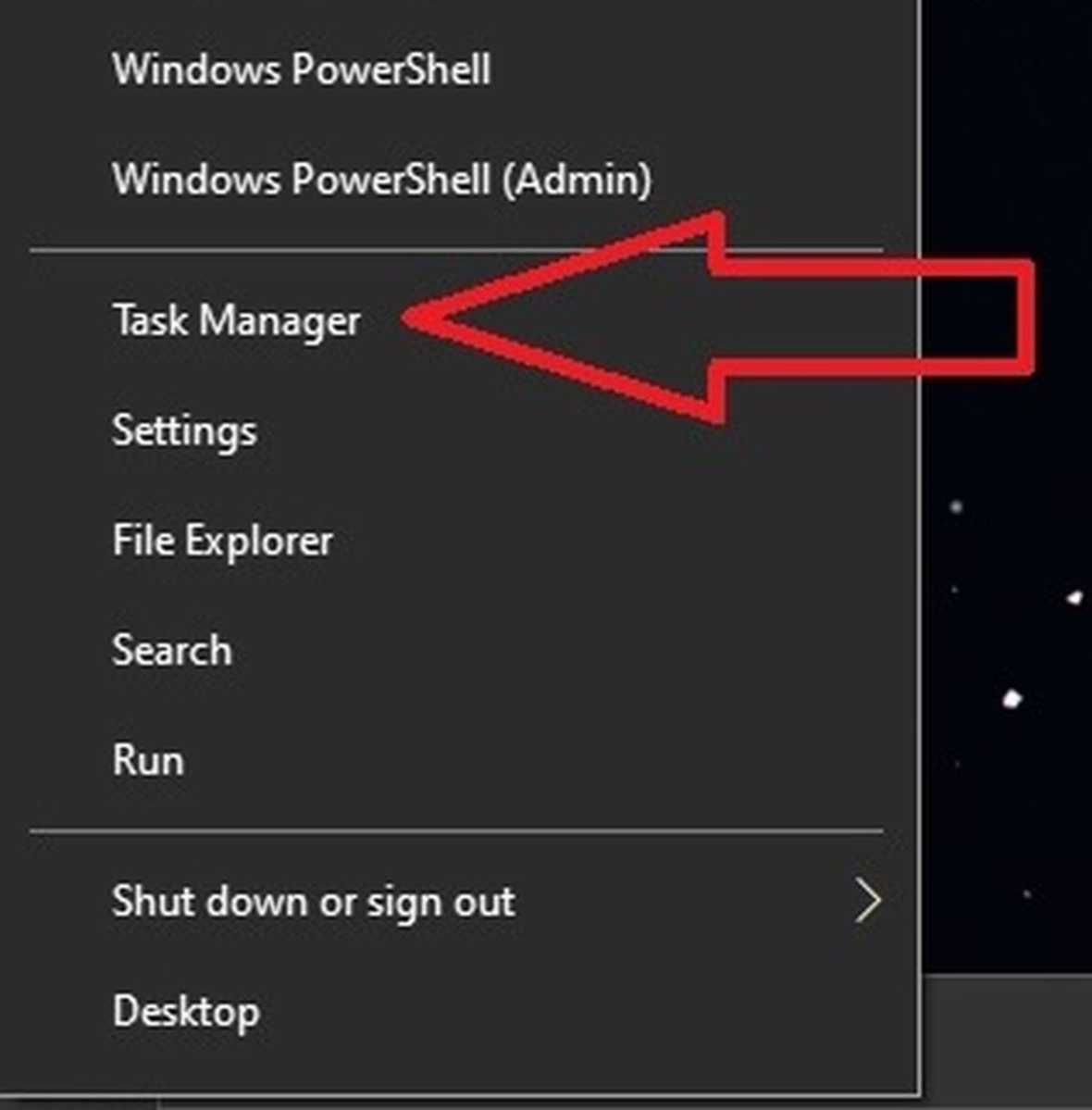
Josh Norem/IDG
Once y'all've opened the Chore Manager, donned a pair or rubber gloves, and leaned in a bit to get a closer wait at the "evidence," it'south time to brainstorm sleuthing.
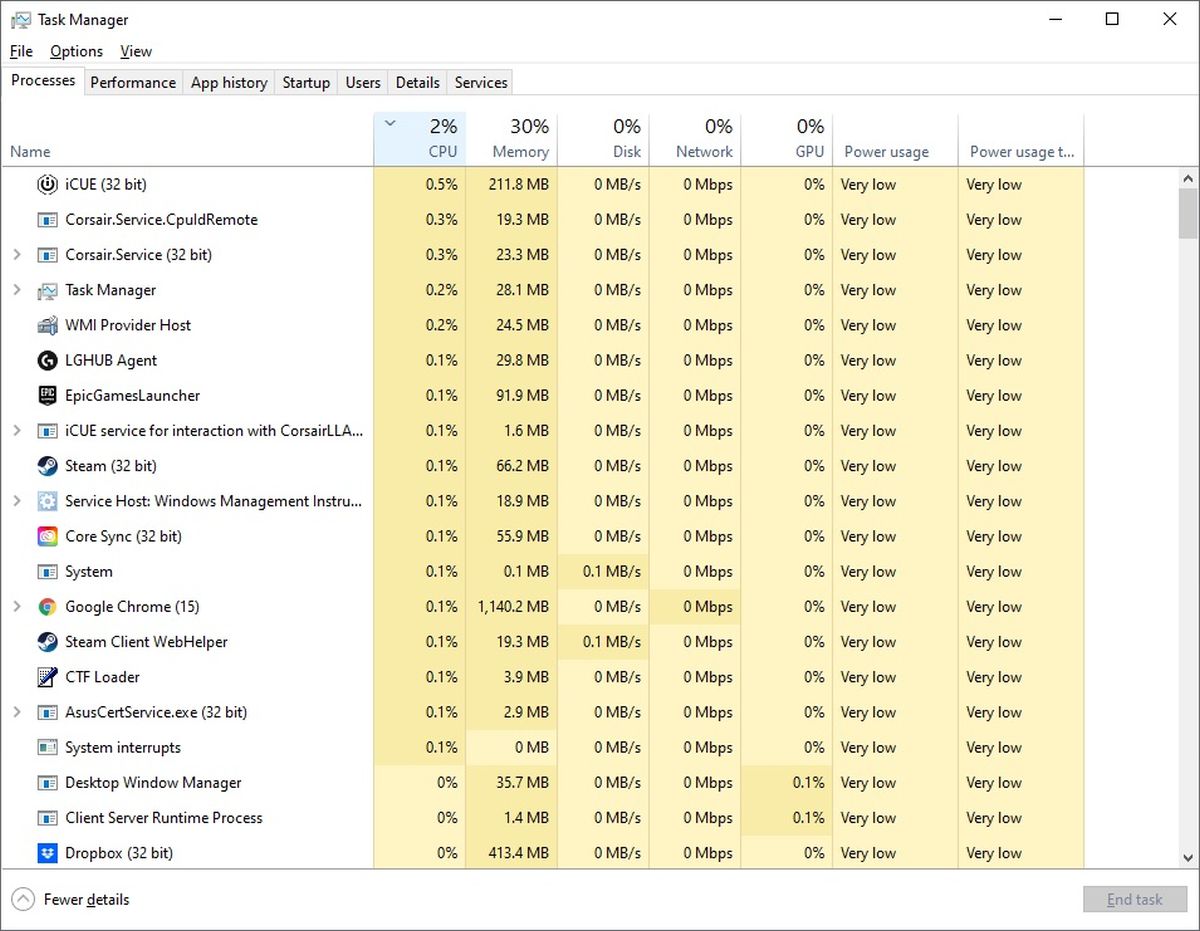
Josh Norem/IDG
You'll want to pay close attention to those kickoff 2 vertical columns: CPU and Memory. If y'all click either cavalcade header, the listing of running processes will sort in order of resource used—from most to least, or vice versa.
For example, say that yous notice the Memory cavalcade is registering 30 percent usage. Clicking the peak of the column ranks processes from about to least RAM hungry, and past golly, Google Chrome is at the top of the listing! Nosotros would have never expected to meet that, and that's sarcasm, by the mode.
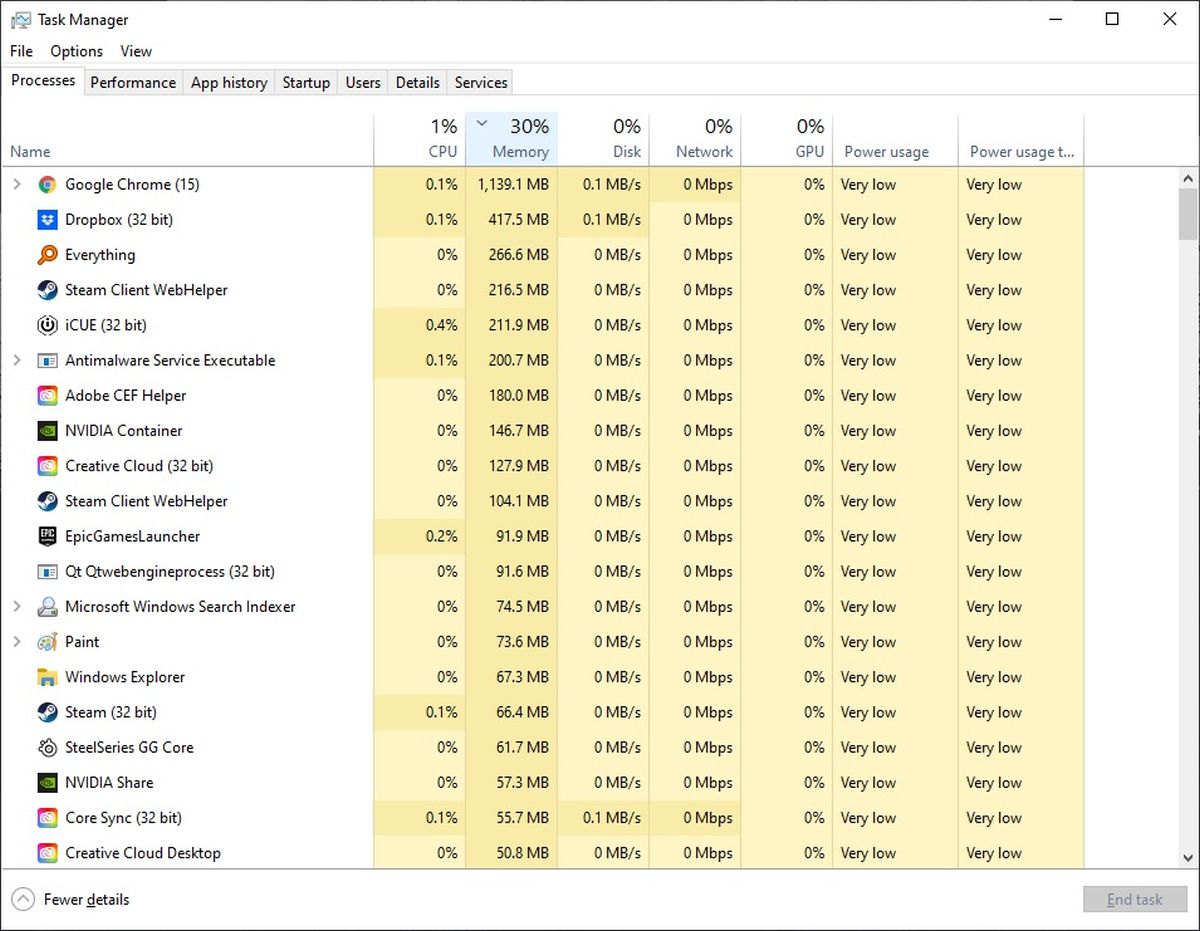
Josh Norem/IDG
In this particular scenario we don't heed if Chrome devours 1GB of our system memory, since we take 32GB total, only if that was a trouble for you, you can just right-click the retentiveness-muncher in question and select Terminate Task.
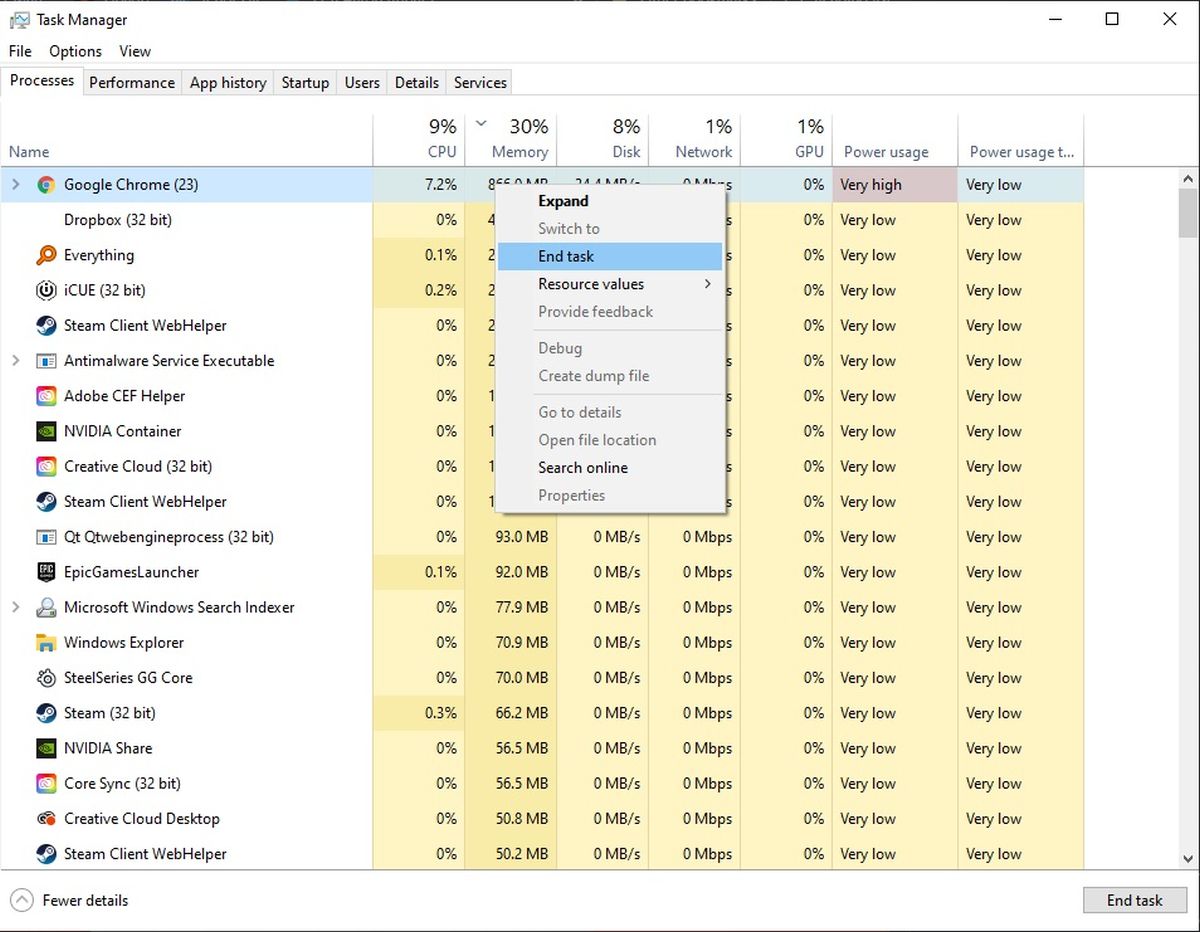
Josh Norem/IDG
If that's also much effort, Windows will automatically highlight programs that are taking up excessive resources. Colored flags, such as yellow, orange, and cerise, betoken the relative severity of the resource consumption. Heed y'all, using even excessive resources isn't necessarily a bad thing, if y'all are intentionally running those processes.
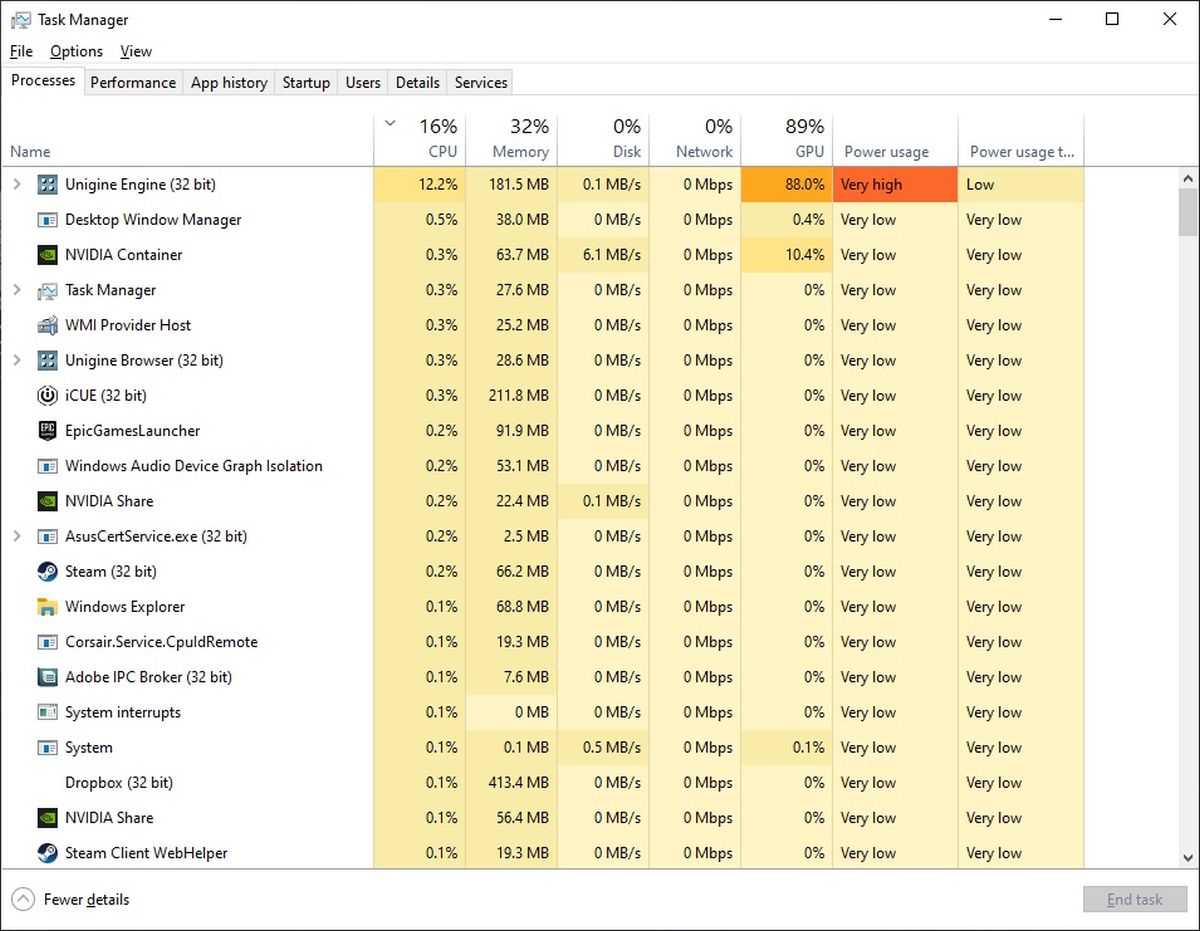
Josh Norem/IDG
The Task Manager makes information technology easy to run into what's going on so you tin make those determinations. Sometimes Windows will run various processes intermittently to index files or perform organization checks and interrupts, which tin can cause unexpected slowdowns. If you detect a program hogging resources, but y'all don't have the option to only Terminate Task, you can always reboot your organisation, and and then check Chore Manager to see if it's still running.
Create a floating CPU monitor
Chore Managing director likewise offers a way to go on an eye on CPU usage in real-time, provided you lot can spare some screen real estate. To create a floating CPU monitor, click on the Performance tab of Task Manager, click CPU, then hover your mouse over the charts showing your CPU cores, right-click, and select Graph Summary View. You can resize it to fit your desktop—it makes a dainty and nerdy addition!

Josh Norem/IDG
Use Resource Monitor to get more than details
If you're not satisfied with what the Task Manager is showing yous, Windows has a more fine-tuned resource monitor that shows a bit more than data on what's happening with your CPU and retentiveness.
To open up this program, just click Starting time, then Run, then type Resmon to open up the Resource Monitor.
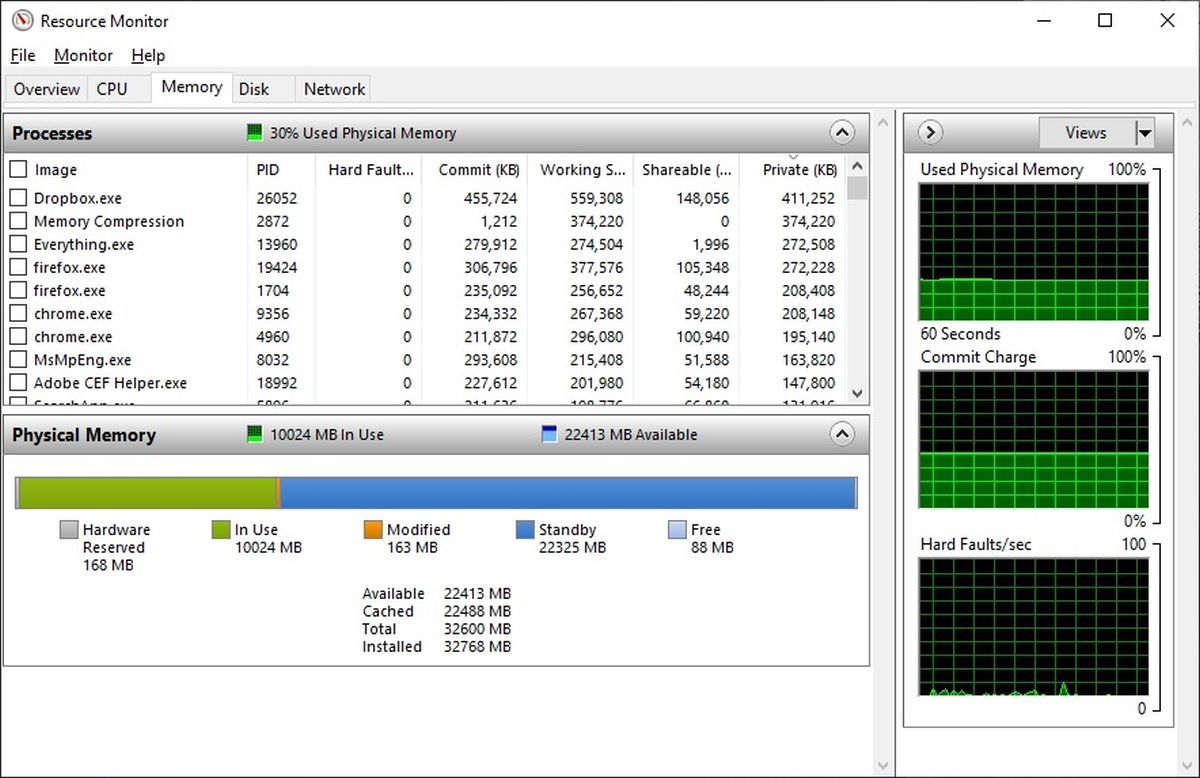
Josh Norem/IDG
While Chore Manger is preferable if all you're strictly interested in CPU use, the Resource Monitor offers more than detailed information virtually retentivity usage. A handy graphical interface shows you the corporeality of RAM in use, by which programs, every bit well as how much is bachelor, how much is installed, and lots more than. You can see how much each program is chewing upwardly, and even automatically search the internet for a highlighted program, if you're non sure why it's running or what information technology is in the starting time place.
Great, but I desire more information
What we covered to a higher place is more than plenty to figure out what's using all your CPU and memory resources. Just if you're the blazon of person who says, "That's peachy, but what kind of CPU practice I take, and how fast is my retentiveness?" then we've got y'all covered as well. If yous really, really want a deep dive into every nook and cranny of your arrangement, we recommend HWINfo.
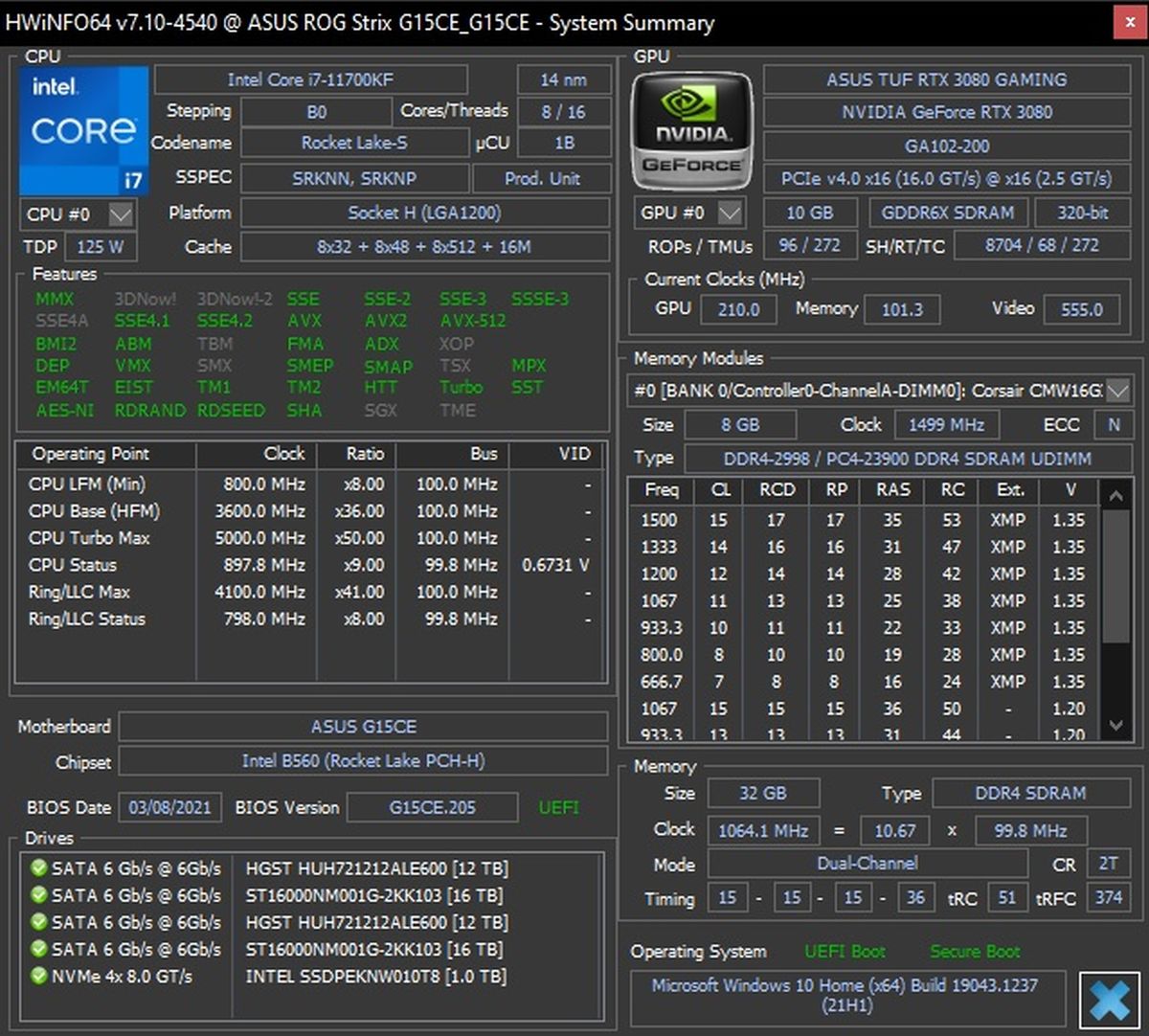
Josh Norem/IDG
The slickest characteristic of this program is when yous hover your mouse over i of the fields it will tell you in obviously English what that information ways, which should satisfy your peckish for specs and more info on your hardware. If you lot want more options, be sure to cheque out our article on How to Check Your Specs in Windows 10.
Note: When you buy something afterwards clicking links in our articles, we may earn a small commission. Read our affiliate link policy for more than details.
How To Check Cpu Usage On Windows 10,
Source: https://www.pcworld.com/article/541489/how-to-check-cpu-and-memory-usage.html
Posted by: maclennanwhoods.blogspot.com


0 Response to "How To Check Cpu Usage On Windows 10"
Post a Comment